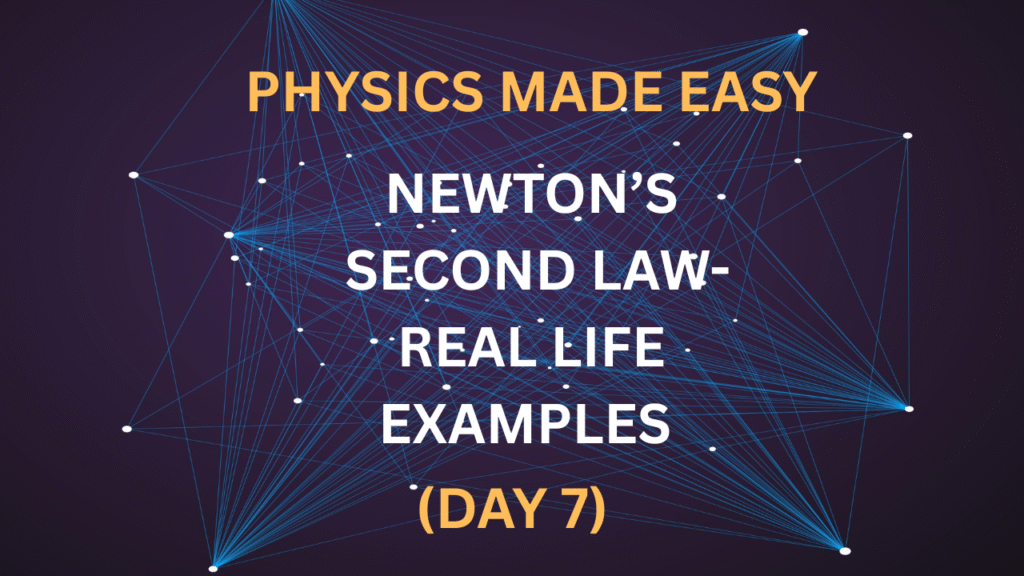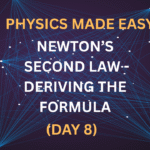🧪 Quick Recap
Newton’s Second Law of Motion states that:
Force = Mass × Acceleration
In simple terms, this means that the more massive an object is—or the faster you want it to move—the more force you need to apply. Let’s dive into some real-life examples that clearly demonstrate this law at work every day!
(Focus keyword: Newton’s Second Law)
🔍 Real-Life Examples That Show Newton’s Second Law
🚲 1. Riding a Bicycle
When you pedal harder, the bicycle speeds up faster — more force results in greater acceleration. And if a heavier person is riding the bike? They need to apply even more force to reach the same speed.
📦 2. Pushing a Shopping Cart
Pushing an empty shopping cart is easy because it has little mass. But a fully loaded cart requires much more force to move because increased mass = increased force needed.
🧊 3. Sliding a Box
Have you ever tried moving boxes across the floor? A light box slides easily with a small push. A heavy box is much tougher — you have to exert more force to overcome its larger mass.
🏏 4. Hitting a Cricket Ball
When a batter swings the bat faster and harder, the ball travels a greater distance — this is acceleration from the extra force. Plus, a heavier bat can transfer more force to the ball, sending it even further!
🪂 5. Skydiver & Parachute
Before a parachute opens, gravity pulls a skydiver down rapidly. Once the parachute is deployed, air resistance provides an upward force that reduces acceleration, allowing for a safe landing. Here, force and acceleration change due to the parachute’s impact.
🛷 6. Sledding Down a Hill
A heavier sledder accelerates faster downhill because gravity applies a greater force due to their greater mass. That increased force results in quicker acceleration — a perfect example of Newton’s Second Law at play.
🎢 7. Roller Coasters
Ever wondered why roller coasters pick up so much speed? Steep drops allow gravity to exert more force, creating rapid acceleration. Plus, the heavier the coaster and its passengers, the greater the force pulling them downwards.
🧳 8. Dragging Luggage
Dragging an empty suitcase is simple. Fill it up and suddenly, you need much more force. Again, more mass requires more force to get the same acceleration.
📝 Summary
Newton’s Second Law isn’t just a textbook topic — it shapes the world around you:
- More mass = more force needed.
- More force = more acceleration.
- Whether you’re cycling, shopping, or sledding downhill, this law governs every motion you make.
By recognizing these everyday examples, you can appreciate just how central Newton’s Second Law is to our lives.
💡 Ready to Test It Yourself?
Next time you kick a ball, push a chair, or ride a bicycle, remember that Newton’s Second Law is always in action. Let us know in the comments where you see this law at work — we’d love to hear your observations!



